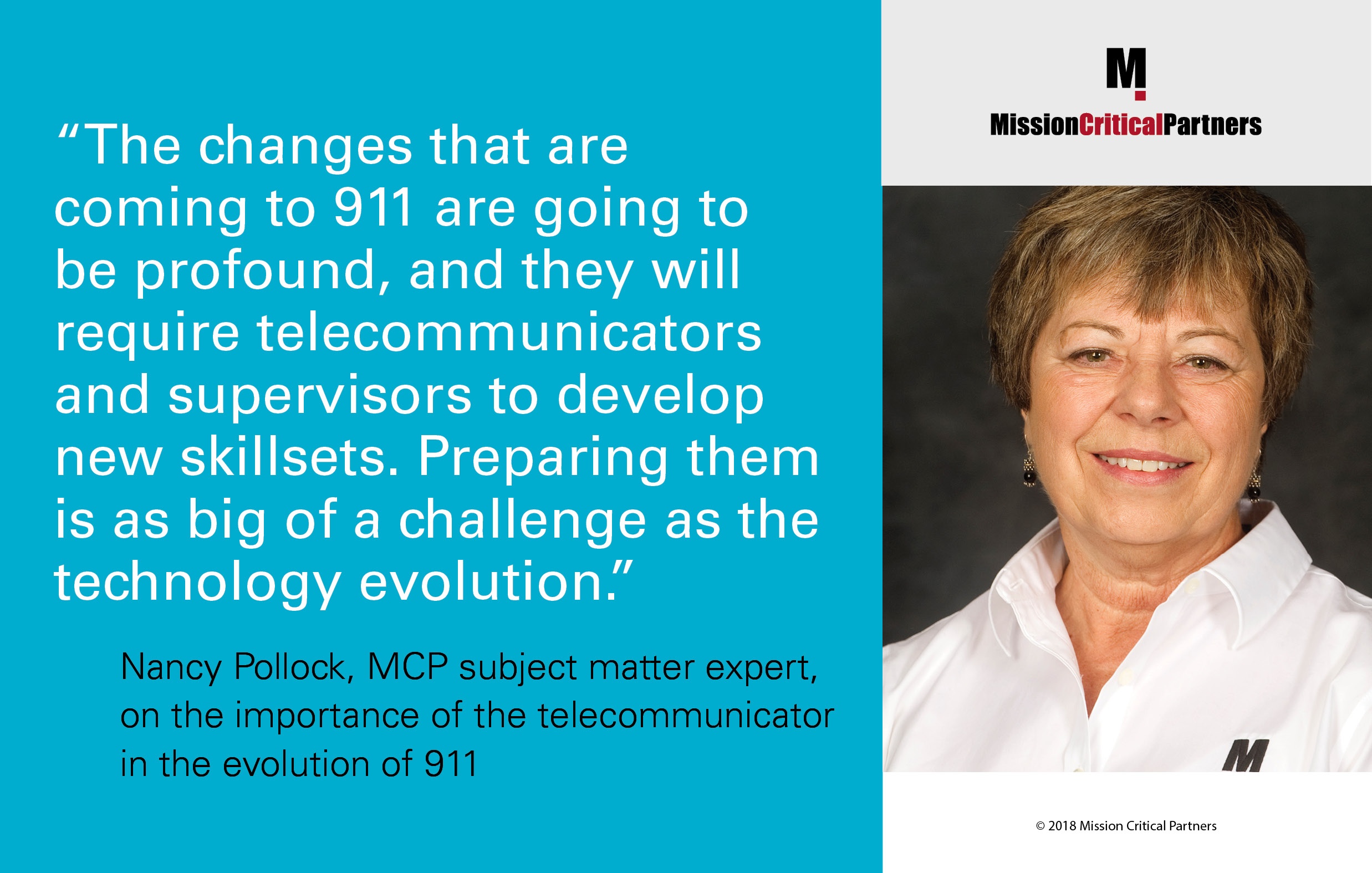INTERVIEW: Helping 911 Evolve as Technology Evolves
Posted on June 4, 2018 by Glenn Bischoff
This blog post is the second in a two-part series with two MCP experts, John Cunnington and Nancy Pollock, who together have more than of 80 years of experience in public safety communications. This blog post is part of our Let's Evolve 911 campaign that commemorates the 50th anniversary of the first 911 call, which took place 50 years ago this year.
In a previous post, Nancy Pollock and John Cunnington shared their perspectives on the evolution of 911 service in the United States over its first half century. In this post, they pick up where they left off, finishing with their insights regarding the sector’s future.
MCP Insights: In the previous post, you spoke of the addressing challenges that existed in the early stages of 911 service. But eventually, ANI/ALI and selective routers became ubiquitous—so the next big step forward was the introduction of CAD.
Nancy: To understand how important the introduction of CAD was, you have to understand how things were done before it arrived.
John: There was a manually created “run card” for every physical location—on that card was a list of the various emergency services that could be dispatched to that location. These run cards were the precursors of the datasets that are contained in today’s CAD systems. When a call came in, the dispatcher would pull the run card and use it to make the appropriate dispatching decisions. It was important that the run card was put back in its rightful place, so that it would be available for the next incident at that location. Keeping the cards updated was a major effort.
Nancy: There also were incident complaint report cards, or ICRs, which were about the size of a business envelope and on card stock similar to the IBM punch cards of the time. The call-taker/dispatcher would hand write details about the incident and the type of response that it required. If the fire dispatcher, for instance, was in a different part of the room or in another room altogether, the police dispatcher would send the ICR via a type of conveyor belt or a pneumatic tube—like the ones that banks use—so that the fire dispatcher would know who and what to send to the incident.
MCP Insights: It all sounds very unwieldy.
John: It was, and then some. On a single block you might have several apartments. That’s not necessarily a problem, because the run-card information is similar for every resident. But that building also might contain numerous small businesses, some, like a furniture store, might be storing highly flammable products, while others, a dry cleaner for example, might be storing chemicals and other hazardous materials. So, they all needed their own specific run cards, and there might be hundreds of them in every block, lane or town road.
Nancy: There also was the matter of making all of this information accessible to the dispatchers. Remember that this was well before computers and word-processing programs. Their workstations would be clustered in pod-like fashion around a rotating table, like a giant Lazy Susan; when they received an emergency call, they would swivel in their chairs and then rotate the table to access the file that contained the run card they needed. John mentioned the need to refile these cards properly—there were instances aplenty when the dispatcher knew that the information existed, but they couldn’t find it, which really hampered the process. CAD changed all of that.
MCP Insights: So enough looking back—what about 911’s future has you excited or concerned?
John: There always is going to be some measure of political pressure that seeks to prevent technological and operational changes. We’re seeing that today in some places regarding NG911, even though it is a very exciting technology that is going to have a tremendous impact on emergency response.

Nancy: Any big change is equal parts exciting and scary, and some people to be sure are going to get hung up on the changes that are coming to 911. At the same time, we live in a world where technology has become an enormous part of our daily lives—because of that we tend to trust it a lot faster and easier than we did when John and I started our careers. This industry is becoming more professionalized and service is going to improve tremendously—and technology is going to play a huge role in that. However, the changes that are coming will be profound, and they will require 911 center telecommunicators and supervisors to develop new skillsets— we need to prepare them for what’s coming, and that’s going to be as big a challenge as the technology adoption.
John: We need to make sure that we don’t abandon today’s telecommunicators in the evolutionary process—we can’t let technology advancements make them obsolete. We need to anticipate what 911 centers will look like in 2030 and start preparing and retraining personnel now, so that they’re ready. We have to plan for this, for helping people evolve as technology evolves. We owe it to them, as they are the engine of our progress.
Nancy: That’s what’s scary for all of those people sitting in those chairs today. They want to know, where is my place, what is my future? We need to make sure that they understand their importance as their world changes around them.
Topics: 911 Anniversary


